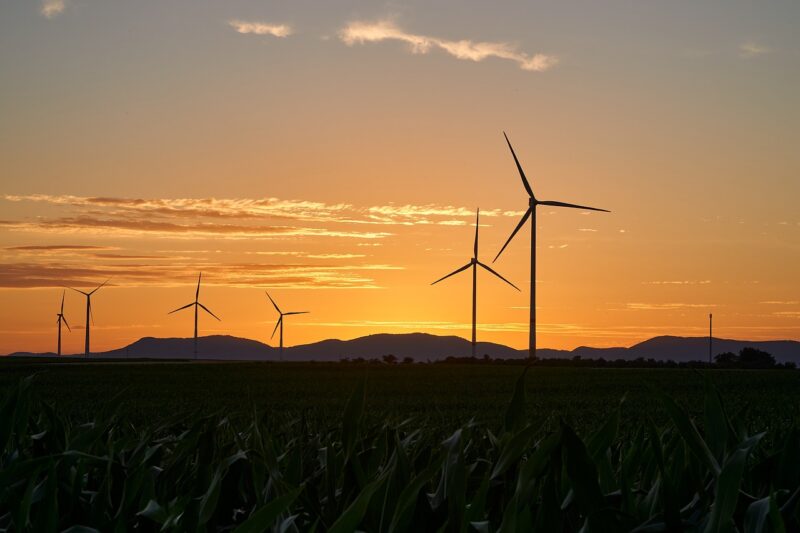Exploring the Future of Renewable Energy: How Wind, Solar, and Hydro Are Changing Our World
November 11, 2024

As the world grapples with the effects of climate change, the need for sustainable energy solutions has never been more pressing. Renewable energy—derived from natural processes that are replenished constantly—has emerged as a crucial player in the shift towards a more sustainable planet. In this article, we’ll explore three leading renewable energy sources: wind, solar, and hydro power, examining their impact on the environment, economy, and future of energy.
1. The Importance of Renewable Energy
Renewable energy provides a sustainable alternative to fossil fuels, which contribute to greenhouse gas emissions and global warming. By harnessing natural resources like sunlight, wind, and water, we can generate electricity with minimal environmental impact. Renewable energy not only helps mitigate climate change but also promotes energy independence and creates new job opportunities in the green economy.
Key Benefits of Renewable Energy:
- Reduced Carbon Emissions: Utilizing renewable energy sources significantly lowers greenhouse gas emissions, contributing to cleaner air and a healthier planet.
- Job Creation: The renewable energy sector has proven to be a major source of new jobs, from manufacturing and installation to maintenance and research.
- Energy Security: By diversifying our energy sources and relying less on imported fossil fuels, countries can enhance their energy security and stability.
2. Wind Energy: Harnessing Nature’s Power
Wind energy is one of the fastest-growing renewable energy sectors, driven by technological advancements and declining costs. Wind turbines transform kinetic energy from wind into electricity, which can be fed into the grid.
Key Aspects of Wind Energy:
- Global Growth: In 2022, wind power accounted for around 10% of global electricity generation, with significant capacity installations in countries like China, the USA, and Germany.
- Offshore Wind Farms: The development of offshore wind farms has opened new avenues for energy generation, leveraging stronger and more consistent winds, while also minimizing land use concerns.
- Technology Advancements: Innovations in turbine design and efficiency have resulted in larger, more powerful turbines that can generate electricity even in low wind speeds.
However, wind energy is not without challenges. Issues such as wildlife conservation, noise pollution, and aesthetic impacts pose questions that must be addressed as we scale up wind energy production.
3. Solar Energy: The Power of the Sun
Solar energy harnesses the sun’s power through photovoltaic (PV) panels and solar thermal systems. As one of the most abundant energy sources, solar power has gained widespread adoption in residential, commercial, and utility-scale applications.
Benefits of Solar Energy:
- Decreasing Costs: The cost of solar panels has plummeted by over 80% in the last decade, making solar power affordable and accessible to many.
- Energy Independence: By generating electricity on-site, homeowners and businesses can reduce reliance on centralized energy sources and decrease utility bills.
- Versatility: Solar energy can be deployed at various scales—from small rooftop systems to large solar farms—catering to different energy needs.
Despite its advantages, solar energy does face challenges, including intermittency and the need for energy storage solutions to supply power during cloudy days or nighttime.
4. Hydro Power: The Power of Water
Hydropower generates electricity by harnessing the movement of water, typically through dams or run-of-the-river systems. It is one of the oldest forms of renewable energy and accounts for approximately 16% of global electricity production.
Advantages of Hydropower:
- Reliability: Hydro power can provide a continuous supply of electricity, making it a stable source of renewable energy when managed correctly.
- Energy Storage: Pumped hydro storage allows for the storage of energy, which can be released when demand is high, promoting grid stability.
- Flood Control and Irrigation: Hydropower projects often provide additional benefits, such as flood control and irrigation support for agriculture.
However, large-scale hydropower projects can lead to ecological disruption, displacement of communities, and changes to local waterways. This warrants careful consideration and planning in project implementation.
5. The Future of Renewable Energy
Looking ahead, the future of renewable energy is optimistic. Global investments in clean energy technologies continue to rise, driven by government policies and increased public awareness of climate change. As battery technology improves and energy storage solutions become more sophisticated, we can anticipate a more integrated energy grid.
Key Trends to Watch:
- Technological Advancements: Advancements in technology will enable more efficient energy production, consumption, and storage, further driving down costs.
- Policy Support: Governments around the world are committing to ambitious climate targets, promoting renewable energy adoption through subsidies and regulatory support.
- Public Awareness: Increasing recognition of climate change issues will continue to drive demand for sustainable energy solutions from consumers and businesses alike.
Conclusion
The transition to renewable energy is not just a trend; it’s a necessity for a sustainable future. By harnessing the power of wind, solar, and hydro resources, we can effectively combat climate change while building a resilient energy infrastructure. As we look to the future, it is clear that renewable energy will play a pivotal role in shaping a cleaner, more sustainable world for generations to come.






